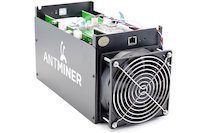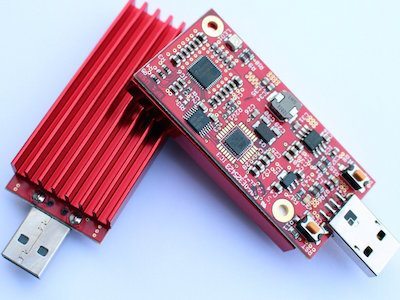Your Bitcoin Wallet
As with all forms of currency, you need a place to keep your money.
With traditional (fiat) currency, most people keep a small amount of
money in a wallet or purse while keeping the rest of their savings at
the bank. Let's see how to do something similar with bitcoins. While
there are many different ways to store bitcoins, this guide will examine
some of the easiest methods for new users.
In simplest terms, bitcoins are stored in digital wallets. A Bitcoin wallet
is simply a piece of software that can store, send, and receive BTC.
However, there are many different wallets to choose from, each with
its own pros and cons. Regardless of what you choose, it's a good idea
to keep two wallets - one for spending and one for your savings. Bitcoin
doesn't rely on financial institutions like banks, and instead, users
have complete control over their money. While this might sound like a
huge responsibility, this guide aims to show how easy it is to be your
own bank.
Your Spending (Hot) Bitcoin Wallet
Your first wallet will be used for day to day transactions, similar
to the physical wallet in your pocket or purse. This type of wallet is
also sometimes referred to as a "hot wallet," meaning that it is
connected to the Internet. One very popular and easy to use hot wallet
is Blockchain.info,
a wallet that can conveniently be accessed from anywhere in the world
on any device as long as you're connected to the Internet. To start
using Blockchain, simply navigate to this page, and create an account. In just a few simple steps, you'll have your own Bitcoin wallet!
After logging in to your newly created wallet, you should see something like this, minus the $31k.
Notice the QR code on the left and the text next to it. This
is your Bitcoin address. If anyone wants to send you money, they send it
to your unique address. If you want to send someone money, you go to
the "Send Money" tab and enter that person's address and the amount of
bitcoins you want to send. It's that easy.
Sending money has never been simpler. You can send bitcoins to anyone anywhere in the world without expensive fees.
You may have noticed something interesting. You are
encouraged to share your Bitcoin address. A Bitcoin address doesn't need
to be kept private and protected the way a credit card number does.
Instead, a Bitcoin address functions much like a mailing address. Anyone
can send you mail, but only you have the key to access the mail in your
mailbox. Similarly, anyone can send bitcoins to your address, but only
you have access to the coins you receive.
Compare this to a credit card number or a debit card number.If you
want to make a transaction, you have to give the merchant total access
to your funds, and trust that he/she will only withdraw the amount
authorized. But with Bitcoin,
you send the money rather than having the merchant take the money from
your wallet. As you will see, Bitcoin eliminates the need to trust third
parties (although in some instances it can be convenient to trust one),
and is in many ways a lot safer than traditional money.
Speaking of third parties, is Blockchain safe? The short answer is, yes. Blockchain's source code
is available for anyone to examine, meaning that users can be sure that
the service isn't doing anything suspicious behind the scenes.
Furthermore, Blockchain does not have access to users' private keys and
is considered sufficiently secure by most in the Bitcoin community. Of
course, for the truly paranoid, you could download a desktop wallet client
such as Bitcoin Core or Electrum. Since the software would be on your
own computer rather than Blockchain's servers, it could be considered
more secure. However, the downside would be that your wallet would only
be accessible from your computer. Services like Blockchain provide both
convenience and reasonably good security, which is important for an
everyday wallet.
Your Savings (Cold) Bitcoin Wallet
Now this is where you want to make as few compromises as
possible regarding security. Your savings wallet will be similar to your
savings account at the bank. Since you'll be keeping most of your
bitcoins here, you'll want to use the best possible security. One of the
ways to achieve this is by making your savings wallet a "cold wallet,"
meaning that it's not connected to the Internet. By remaining offline, a
cold wallet is far less vulnerable to hackers. A very easy to use cold
storage solution is Coinbase Vault.
Coinbase's Vault offers easy to use long-term storage for bitcoins.
Without getting into the technical details, the way the Vault works
is that Coinbase stores your bitcoins offline in various secure
locations around the globe. Withdrawing coins from the Vault requires
multiple layers of verification, and withdrawals are time-delayed by 48
hours, meaning the transaction can be cancelled during that 48-hour
window. Coinbase has been independently audited by trusted members of
the community, and is used by prominent companies such as Dell, Expedia, and DISH Network.
But of course, as mentioned above, you don't need to trust a third party like Coinbase. It just might be more convenient, especially for newer users. To truly be your own bank, you can generate a paper wallet or use an offline hardware wallet. But these are beyond the scope of this guide.
Using Your Bitcoins
So you've got your wallets set up. Now it's time to start using those
bitcoins! If you don't have any BTC, you can buy some from a Bitcoin exchange. There are also some free ways to get bitcoins.
But of course, the most basic feature of money is that it can be used
to buy things. So where can you actually spend bitcoins? The list might
surprise you:


